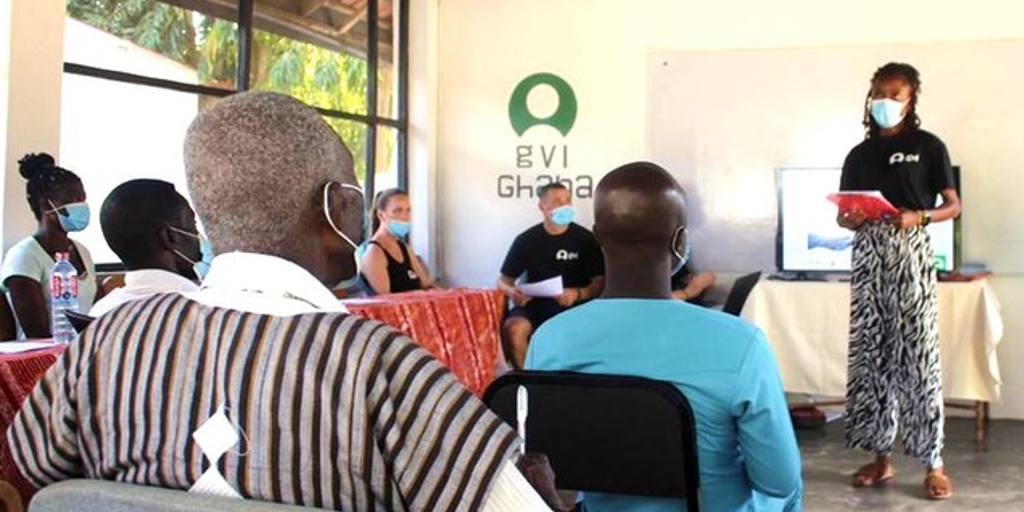
Africa’s fastest growing economies: How Ghana got it right
Tasneem Johnson-Dollie
Posted: January 19, 2022
Original photo: “fruit” by David Greenwood-Haigh is licensed under CC BY-SA 2.0.
In 2019, Ghana had the fastest growing economy in Africa.
For any country with a history of economic instability – and in the midst of the COVID-19 pandemic where African countries have been some of the hardest hit – Ghana’s steady growth is an achievement.
But how does Ghana get it right? Their steps towards good governance and sustainable development have been big contributors.
Ghana’s history
Ghana gained its independence in 1957, and the government set its focus on the economy from the start.
By the late 1900s, the success of Ghana’s cocoa crops – brought over from the Americas in 1878 – seemed to be securing the country’s status as an up-and-coming economy to be reckoned with.
But, all too soon, the drop in the price of cocoa slowed this booming economy.
Although Ghana was also a big exporter of gold, and had a wealth of natural resources, the country’s heavy reliance on cocoa exports saw the dip in Ghana’s economy taking a toll on all aspects of life for Ghanaians.
The country faced some significant challenges, and Ghana’s economy was far from being the fastest-growing economy in Africa.
Original photo: “Cocoa Ghana” by David Greenwood-Haigh is licensed under CC BY-SA 2.0.
How Ghana began to get it right
Good governance began with government officials upping their commitment to reform.
This meant taking note of what the country really needed and making decisions informed by Ghana’s past, present, and future.
And this good governance brought about something remarkable in the 1980s.
Ghana’s economy was being strengthened, and not by some new commodity the country could sell. This strength came from a more structured and equitable system of governance.
The new government prided themselves on running a stable democracy, and their government initiatives looked to strengthen society and industry through economic reform.
The world’s fastest growing economy in 2019
By the mid 1990s, Ghana was once again experiencing rapid economic growth, thanks to good governance put forward in policies and plans looking to improve the quality of life for Ghanaians.
These gains were boosted in 2007 with the discovery of off-shore oil, and Ghana’s economy was showing signs of bursting at the seams.
In 2019, Ghana was referred to as “the world’s fastest growing economy” with terms such as “skyrocketing” being used to describe its growth. In just three decades, Ghana made a total turnaround.
The country has also consistently ranked in the top three countries in Africa for freedom of speech and press freedom according to The World Bank. And while the COVID-19 pandemic certainly halted the economy’s rapid climb, Bloomberg reported a return to economic growth as 2021 came to an end.
These successes all stem from good governance and a shift towards sustainable development.
Original photo: “Street Africa” by jozuadouglas is licensed under CC BY-SA 2.0.
Good governance and sustainable development
If leaders keep their focus on economic growth and ignore sustainable development, their gains may be short-lived.
Sustainable development is defined as development that meets the needs of the present without compromising the ability of future generations to meet their own needs.
The United Nations (UN) has collaborated with experts from all over the world to develop the UN Sustainable Development Goals (UN SDGs) – encouraging the global community to focus on sustainable development, because it makes a significant difference.
Sustainable development depends on good policy-making decisions in different sectors of society. For example, the industrial sector – the goods-producing sector of the economy – has an impact on health.
How? Well, if the industrial sector puts policies in place to limit their contribution to air pollution, then community members will benefit from cleaner air, leading to better health.
And since governments advise all sectors of society, good governance and sustainable development go hand-in-hand.
Acts of good governance can bring about major benefits for communities – like a reduction in inequalities, decent work and economic growth, quality education, and more sustainable cities.
But it’s easier said than done, since every country has its own set of circumstances.
Original photo: “Ghana Fisherman” by hbieser is licensed under CC BY-SA 2.0.
Addressing inequality in Ghana
In the early years of its independence, Ghana approached reform with the Economic Recovery Program (ERP). But this program focused on urban issues, and sidelined the challenges faced by rural communities.
The ERP overlooked the connections between rural and urban communities, and how one community could benefit from improvements in the other.
Since the start of Ghana’s independence, the wealth of rural communities lagged way behind city dwellers’.
Bridging this gap in equality meant bringing better access to jobs, and better pay for rural people.
And by 1997 the Ghanaian government had come up with a plan.
Good governance had brought with it some great opportunities to turn paper policies into practical progress in the form of the Village Infrastructure Project (VIP).
The Village Infrastructure Project (VIP)
Looking to intensify efforts to reduce poverty and increase the quality of life across the country, the Ghanaian government launched the VIP.
There was a keen call for community participation, even during the planning phases of the project. The VIP had four main focus areas, all aligned to community concerns.
Original photo: “Ghana” by lapping is licensed under CC BY-SA 2.0.
1) Rural water infrastructure
Ghana ranks well above most other African countries for the amount of rainfall it receives each year.
But access to water wavers across regions of Ghana, and from season to season, adding to the gaps in equality.
The VIP emphasised the importance of better water management. Government invested in and developed infrastructure for water catchments, as well as water conservation activities.
In this way, they aimed to address the way water was distributed, making it easier for people living in rural areas to access and make use of clean water.
With work on water infrastructure in full flow, the country could get stuck into other rural concerns.
2) Rural transport infrastructure
Before the implementation of the VIP only 8,000 of the 22,000 kilometres of road feeding into rural areas was maintained by the government.
Ghana’s history shows how its economy was dependent on agricultural produce. And in 1997 nothing much had changed.
Moving produce and livestock from fields to farms, and from farms to markets became a central focus area for the Ghanaian government. This was the key to growing Ghana’s economy.
The roads that rural communities had to work with weren’t fit to host cattle-drawn carts or motor vehicles. And so, headloading heavy produce – carrying items by balancing them on the head – became commonplace.
And since men were responsible for the ground-work on farms, women and children would take on the task of transporting produce, and dealing with the unkempt roads.
The government was up to the task of improving the quality of life in villages, and got serious about providing clear roadways, so that vehicles could begin to carry the load for women and children.
Original photo: “Ghana Woman” by David Mark is licensed under CC BY-SA 2.0.
3) Rural post-harvest infrastructure
And if the roads are ready, the supply better be steady! The improvement of roads wouldn’t just mean transporting the usual load of produce to markets, it would mean bumping up production to new heights.
This posed a problem, since there weren’t enough quality post-harvest facilities – buildings where produce is stored before being transported to markets – in Ghana to store an up-scaled amount of produce.
Before the VIP, the spoilage of harvested crops accounted for a staggering 30% of the cost of harvesting.
The VIP provided financial support and practical assistance to develop the infrastructure for post-harvest facilities to solve this concern.
Now farmers could make use of cost-effective preserving techniques – such as cleaning, sorting, drying, smoking and grading of products to extend their shelf-life.
The government also assisted in setting up individual, and group-owned and managed facilities for small-scale producers.
This was a major stepping stone in community empowerment, and set the scene for farmers to take control of their own agricultural futures.
4) Institutional strengthening
The VIP also shed light on great things to come in Ghana – like institutional strengthening through community empowerment.
While institutional strengthening may sound like a top management task, in Ghana it was really all about giving the power back to the people.

It started with the redistribution of administrative responsibilities to 110 district assemblies (DAs) – shifting power from the national to the district level.
The DAs were assigned the highest authority at the local level, and were responsible for providing basic education, public health, environmental protection and sanitation services.
To do this, the constitution dedicated 10% of the gross domestic product (GDP) of the country to the activities of DAs. This was known as the District Assemblies Common Fund (DACF).
And, each DA was appointed an agricultural coordinator from the community to push post-harvest infrastructure, and other agricultural activities.
This allowed rural communities to settle into managing projects on the ground that would improve their own livelihoods.
With the VIP and other government initiatives well underway, the world could see how good governance got Ghana steering towards sustainable development.
Seeking more sustainability
The gains made in Ghana should bring hope to many challenging contexts.
But maintaining progress while protecting natural resources can be a tricky balancing act.
Original photo: “Slave Castle” by David Olive is licensed under CC BY-SA 2.0.
In April 2019, the World Resources Institute (WRI) showed that Ghana was increasingly losing swathes of its rainforest.
Interestingly, the rainforests are being cleared to grow cocoa crops, which has again become a major commodity for export in Ghana.
Yes, Ghana has built the idea of sustainability into its economic reform programs, but promises on paper don’t always filter down to the ground, except where there is good governance.
Balancing economic growth and sustainable development
Historically, conserving resources of soil, forest, and biodiversity have been described as key challenges in Ghana.
But, working in its favour, the country made moves towards the UN SDGs before these goals were even compiled in 2015, showing another history: of committing to sustainability.
And Ghana’s stayed true to that history, having rolled out programs to address sustainability – like the Low Emission Capacity Building (LECB) project, “climate smart” farming practices, and multiple projects aimed at educating communities on sustainable forestry and water use.
This goes to show that Ghana has the good governance and sustainable development stride that it needs to get its economy back on track, as long as it sticks to sustainable progress.
If you’re driven to make a contribution to Ghana’s unique history, look at our programs in Ghana and engage with local partners who are making major strides on the ground.
By Tasneem Johnson-Dollie







